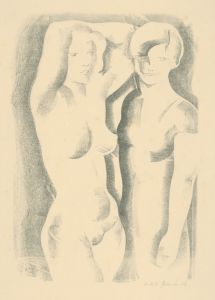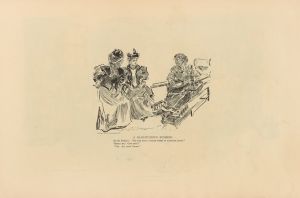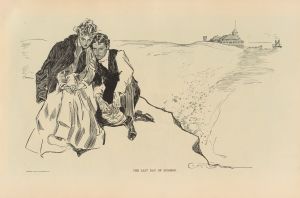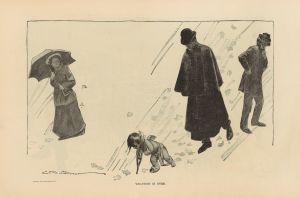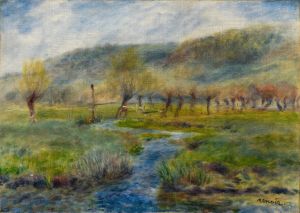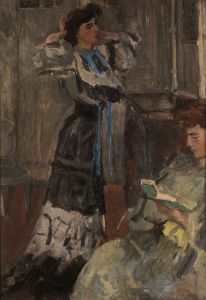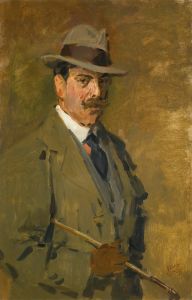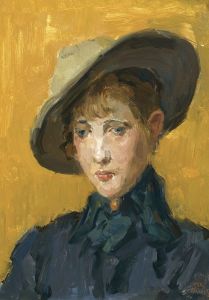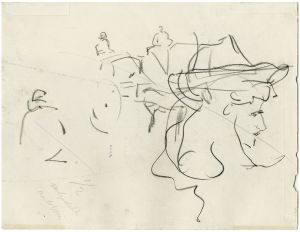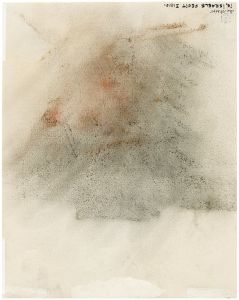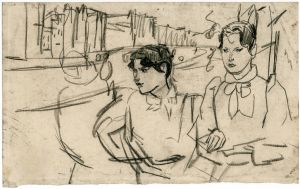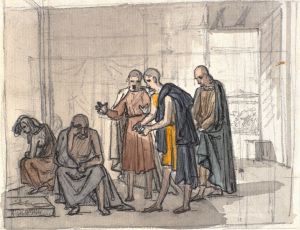
Picnic in the Bois de boulogne, Paris
A hand-painted replica of Isaac Israëls’s masterpiece Picnic in the Bois de boulogne, Paris, meticulously crafted by professional artists to capture the true essence of the original. Each piece is created with museum-quality canvas and rare mineral pigments, carefully painted by experienced artists with delicate brushstrokes and rich, layered colors to perfectly recreate the texture of the original artwork. Unlike machine-printed reproductions, this hand-painted version brings the painting to life, infused with the artist’s emotions and skill in every stroke. Whether for personal collection or home decoration, it instantly elevates the artistic atmosphere of any space.
Isaac Israëls' painting Picnic in the Bois de Boulogne, Paris is a notable work by the Dutch Impressionist painter, who is recognized for his vibrant depictions of modern urban life and leisure during the late 19th and early 20th centuries. This particular painting captures a scene of relaxation and social interaction in the Bois de Boulogne, a large public park located on the western edge of Paris. The park, established during the reign of Napoleon III in the mid-19th century, was a popular destination for Parisians seeking respite from the bustling city. It served as a setting for various recreational activities, including picnics, boating, and promenades.
Isaac Israëls (1865–1934) was the son of Jozef Israëls, a prominent figure in the Hague School of painting. While his father’s work was rooted in realism and often depicted rural life, Isaac Israëls embraced the Impressionist style, focusing on the dynamic energy of urban environments and the people who inhabited them. After studying at the Royal Academy of Art in The Hague, Israëls moved to Amsterdam and later spent significant time in Paris, where he was influenced by the artistic milieu of the city.
In Picnic in the Bois de Boulogne, Paris, Israëls employs loose brushstrokes and a light-filled palette characteristic of Impressionism. The painting portrays a group of elegantly dressed individuals gathered for a picnic, surrounded by the lush greenery of the park. The figures are depicted in a casual, unposed manner, emphasizing the spontaneity and informality of the scene. Israëls’ ability to capture fleeting moments of everyday life is evident in this work, as he conveys the relaxed atmosphere and social interactions of the group.
The painting reflects Israëls’ interest in modern life and his skill in portraying the nuances of human behavior. His time in Paris allowed him to observe and document the city’s vibrant social scenes, and the Bois de Boulogne provided an ideal backdrop for his explorations of leisure and fashion. Israëls’ works from this period often highlight the interplay between individuals and their surroundings, creating compositions that are both intimate and dynamic.
Today, Picnic in the Bois de Boulogne, Paris is regarded as an example of Israëls’ mastery in capturing the essence of his time. The painting is part of the broader Impressionist movement, which sought to depict contemporary life with immediacy and authenticity. While specific details about the painting’s creation and provenance may not be widely documented, it remains a testament to Israëls’ artistic vision and his ability to bring everyday moments to life on canvas.





